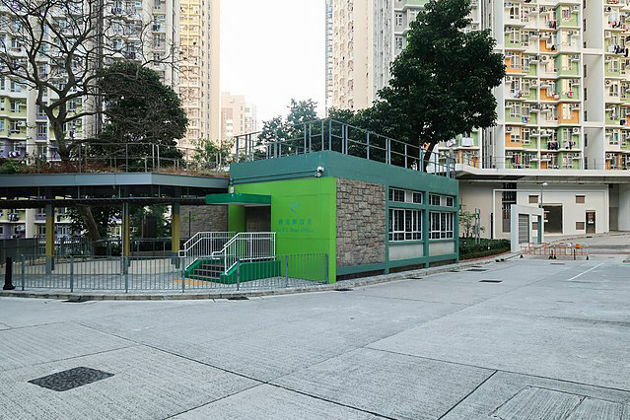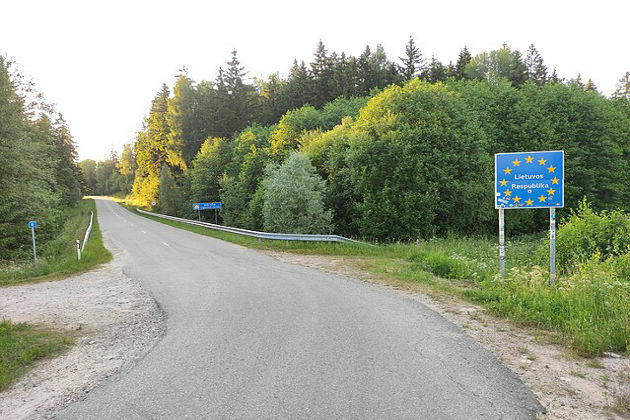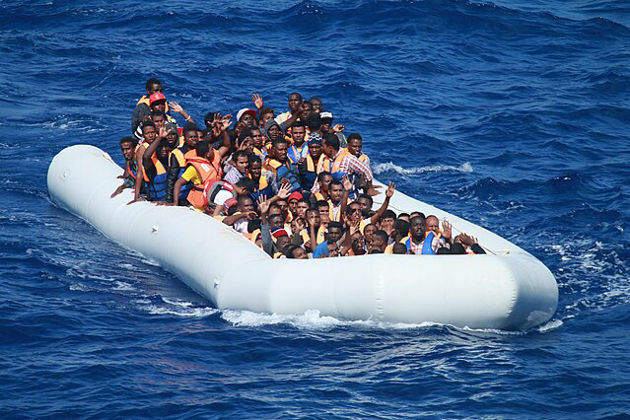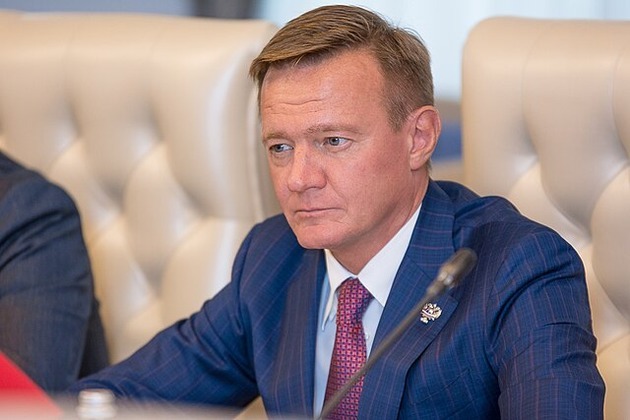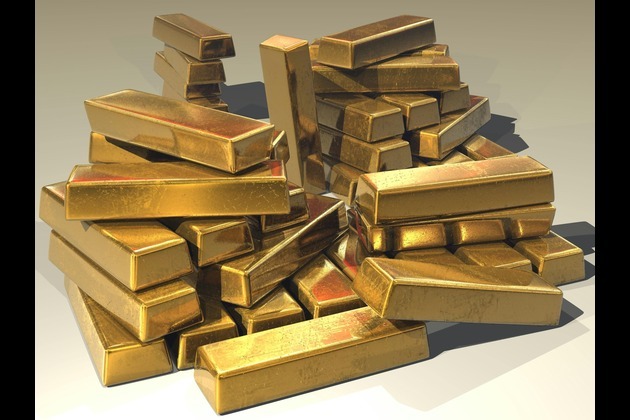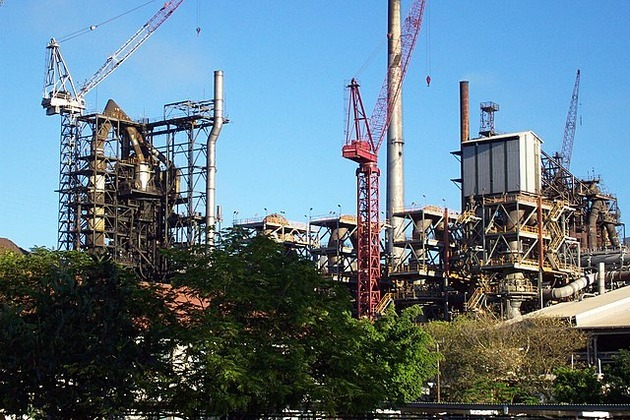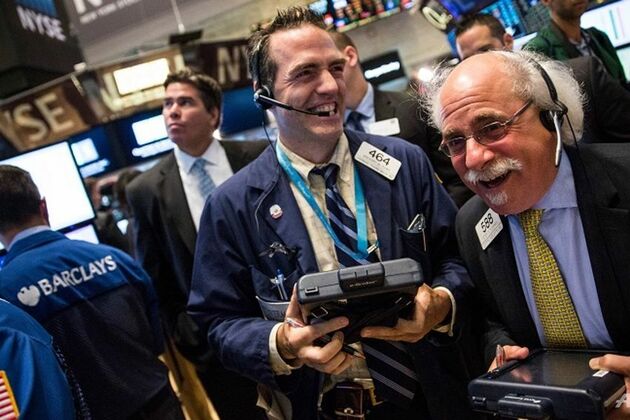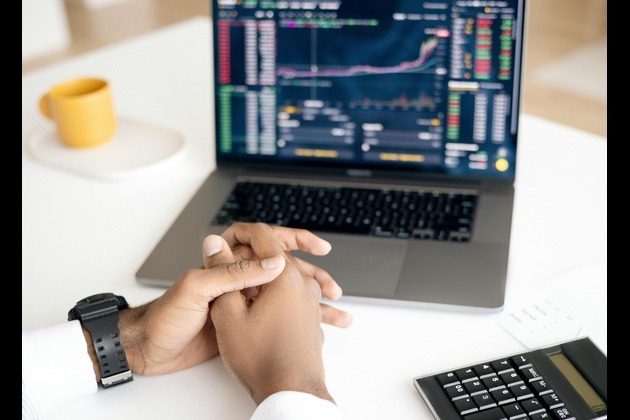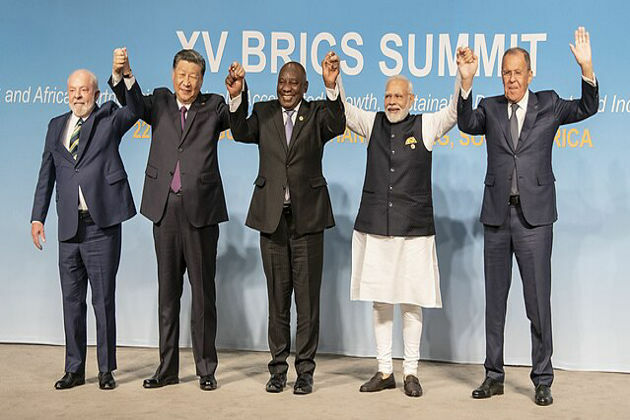These weird Soviet devices cure diseases!
RBTH
16 Oct 2021, 14:24 GMT+10
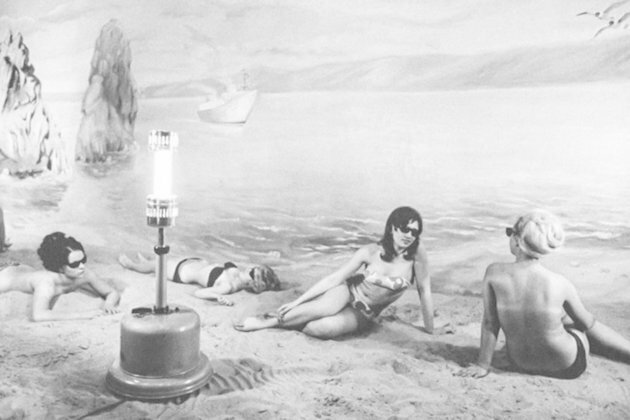
Soviet physical therapists managed to prevent real disasters with heat, UV radiation and electric current. However, sometimes the procedures themselves looked... a bit crazy.
Perhaps no other country in the world has been engaged in hardware physiotherapy as massively as the Soviet Union. Since childhood, every Soviet knew about devices for the prevention of all kinds of diseases: They were not only in hospitals and sanatoriums, but also in kindergartens, schools and factories. Everything was free, of course. And many of these devices are still being successfully used today.
Quartz lamp treatment
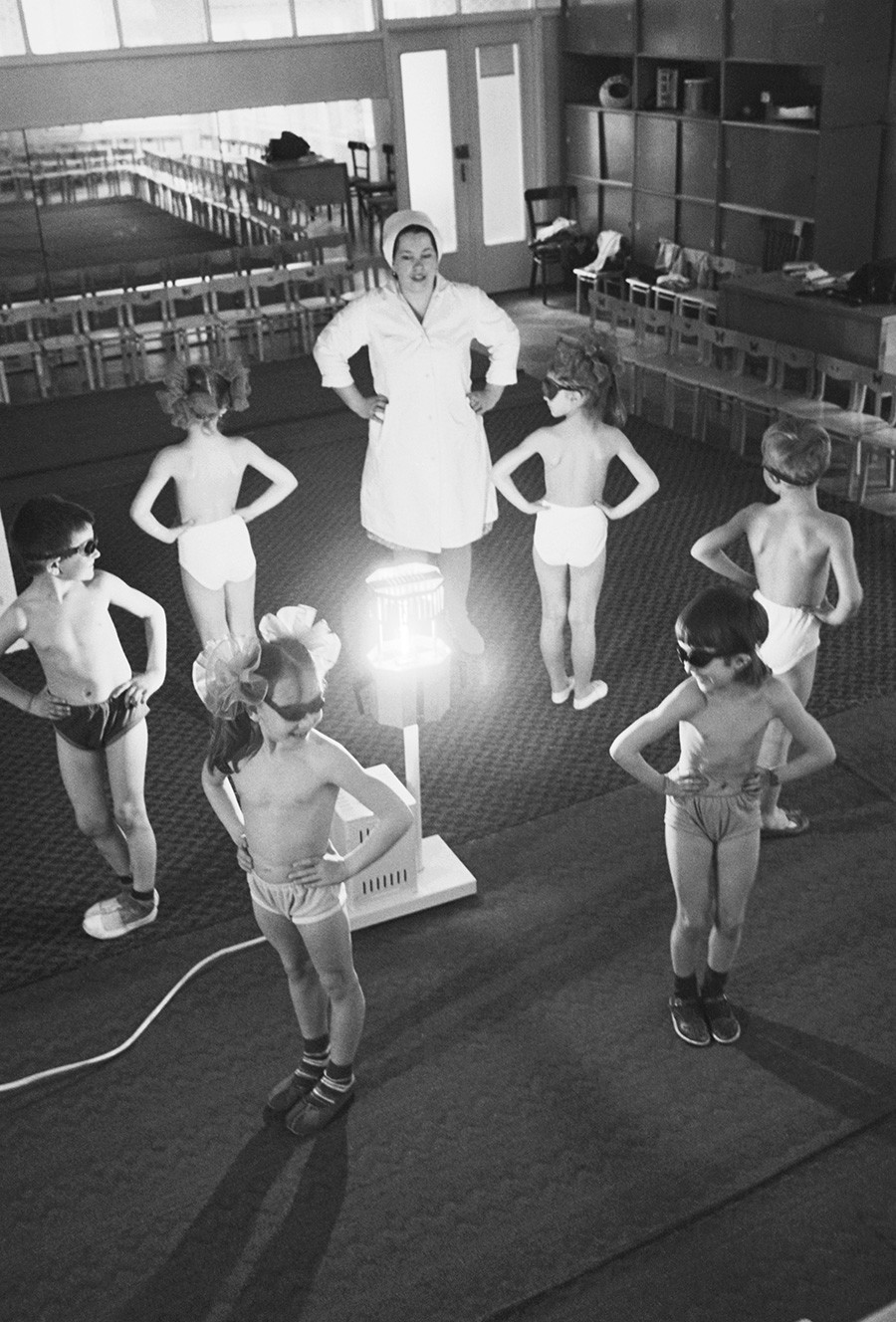
The quartz lamp treatment, 1987.
Boris Dembitsky/TASS
Photos of kids in sunglasses, which gather around a quartz lamp, look surprising to any modern person. However, this is how the Soviets made up for the lack of vitamin D and fought kids' rickets. Also, with the help of ultraviolet radiation, they disinfected the air and surfaces of the room.
Looking at the lamp was not safe, because you could get burned eyes. "We even had such glasses at home, with dark green lenses," a Twitter user recalled. "It's impossible to forget the smell of ozone, it's unusual and, in some ways, pleasant."
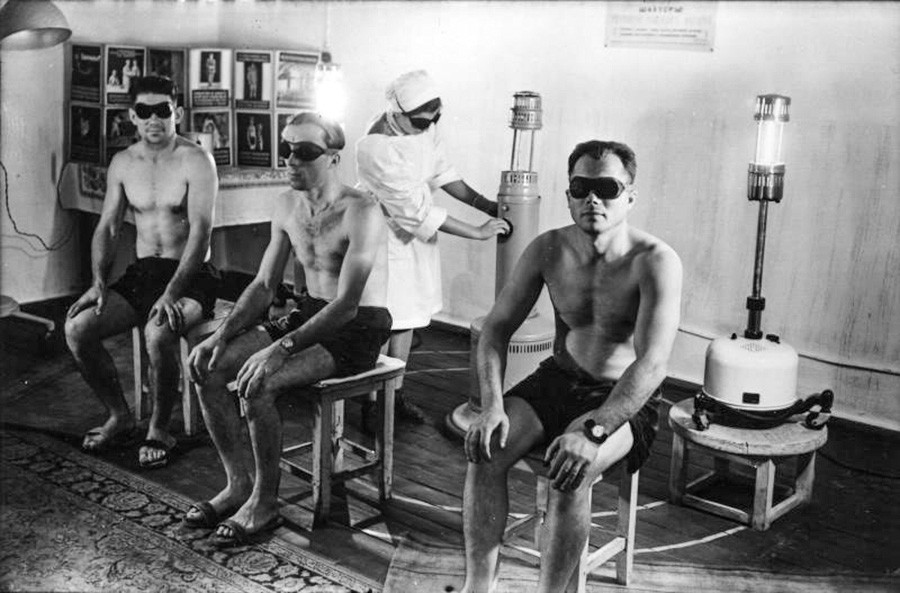
In the physiotherapy room.
In factories and sanatoriums, there were special rooms to make such quartz sessions for workers. They were called photarii.
Some factories arranged these rooms very creatively.
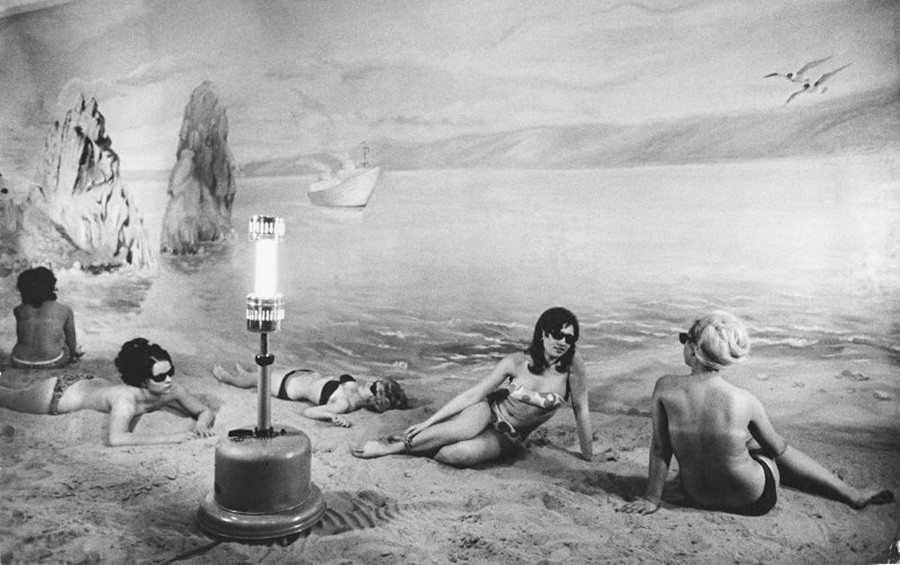
At the Penza bicycle plant.
These days, there's no such treatment in kindergartens and other public places anymore, because malnutrition was overcome many years ago and the state supposes their citizens are capable of taking care of themselves and their children. However, quartz lamps of greater power are used for disinfection of hospitals, beauty salons and public transport. And anyone who wants to get a personal dose of UV can use modern tanning beds.
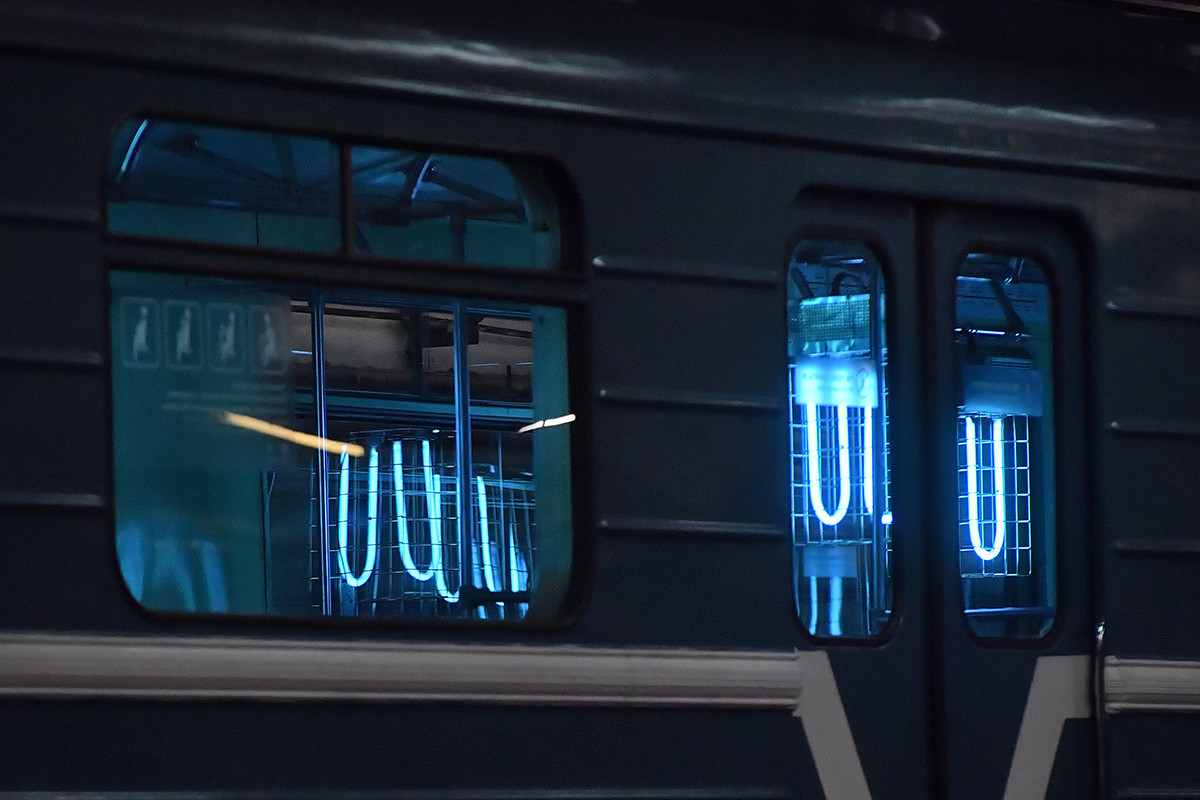
Quartz lamps are used today for the disinfection of Moscow metro trains.
Evgeny Odinokov/Sputnik
UV-lamp for Ear-Nose-Throat
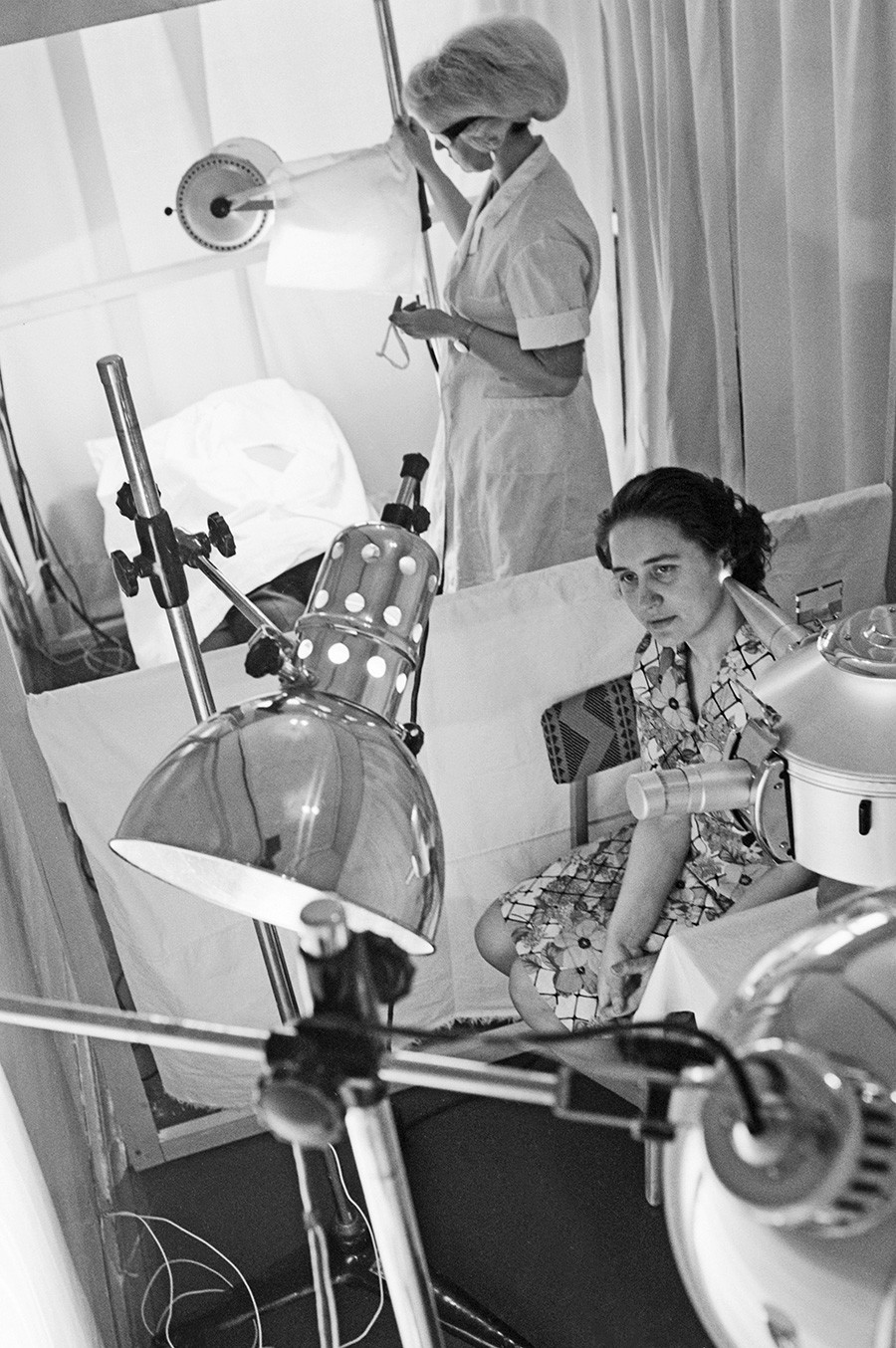
Quartz procedure in the physiotherapy room, 1978.
Vladimir Matviyevsky/TASS
Ultraviolet rays were also used for local radiation. The Solnyshko ("Little sun") device was the main way to fight colds and viruses among kids. It had nozzles for throats, noses and ears. The devices were designed to warm up one, two or four children at the same time and it was possible to use different types of nozzles for each.
"When I was sick, I was taken to this device in the polyclinic. I paid attention to the specific smell in the mouth after it," an Internet user wrote. It smelled of ionized air.
Magnetic therapy
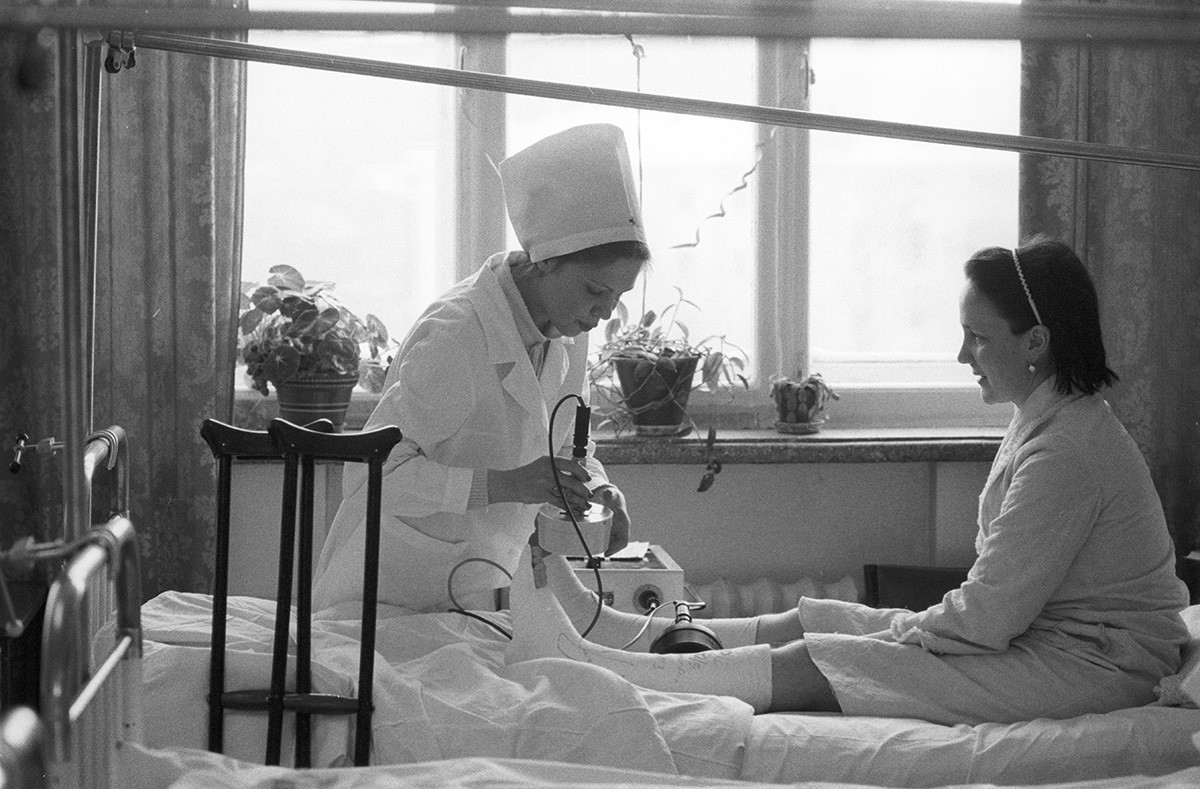
Magnetic therapy on a Polus-1 device.
Vladimir Fidorenko/Sputnik
Soviet physiotherapists actively used magnetic fields to restore a patient after surgery. Such therapy could help accelerate blood flow in the needed places, positively affect blood clotting and blood vessels. Also, such devices were used in the treatment of varicose veins, swelling in the legs, rheumatism, gynecology and eye diseases. Some devices, for example, 'Polus-1', can be used even at home today.
Electric sleep therapy
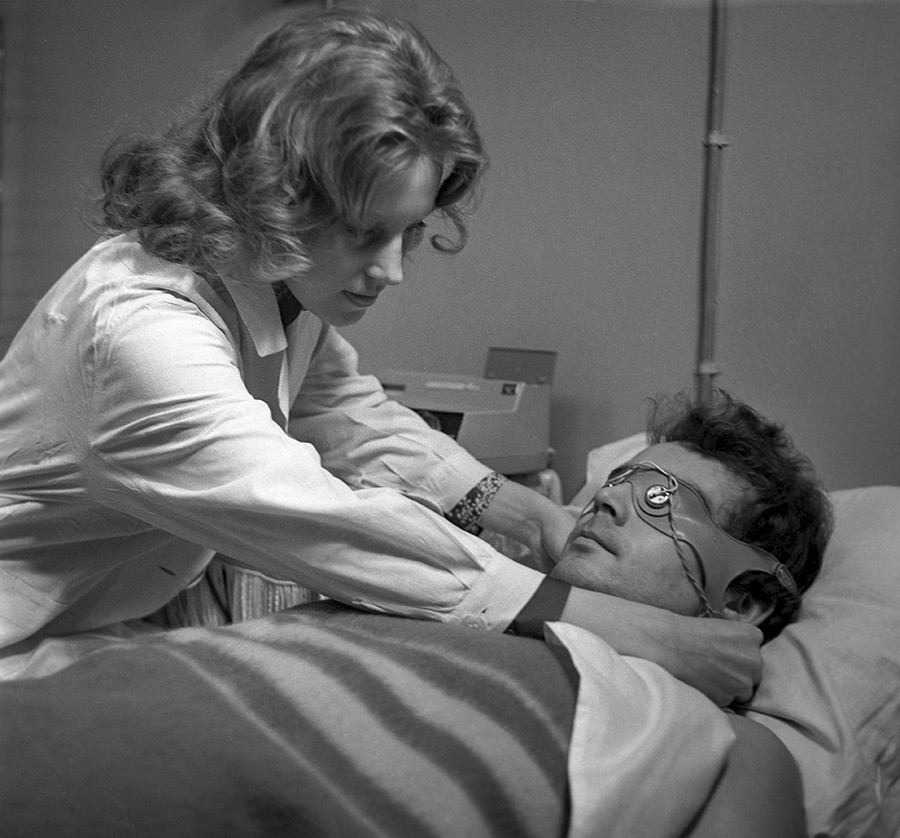
Here's how the Electroson treatment looked like.
V.Mitkovsky/Sputnik
This is how, in the Soviet times, neuroses and hypertension were treated. This device was called Electroson ("Electric sleep") and worked on low-frequency pulse currents. Patients wore special glasses and the currents would enter the brain, causing mild drowsiness. Thus, blood circulation improved, the person calmed down and painful sensations decreased.
Electrophoresis
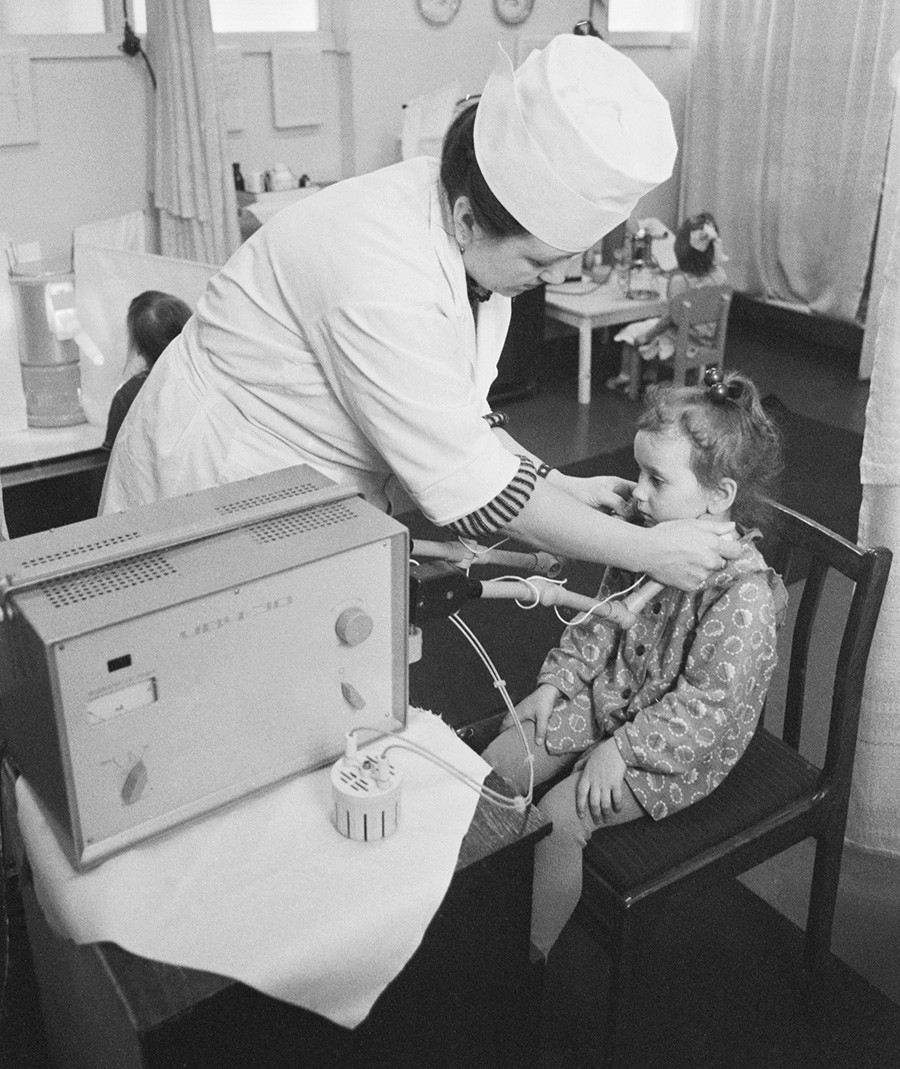
A physiotherapist treats a pupil of the kindergarten run by the Omskgidroprivod Hydraulic Machinery Plant, 1989.
Alexander Kositsin
Electric currents also help to deliver drugs or nutrients to an organism. Soviet doctors believed that electrophoresis could create a high concentration of medication in the affected organ, without saturating the entire body with it. Although modern scientists are skeptical about the effectiveness of this method of treatment, it is still used in medicine.
D'Arsonval electrotherapy
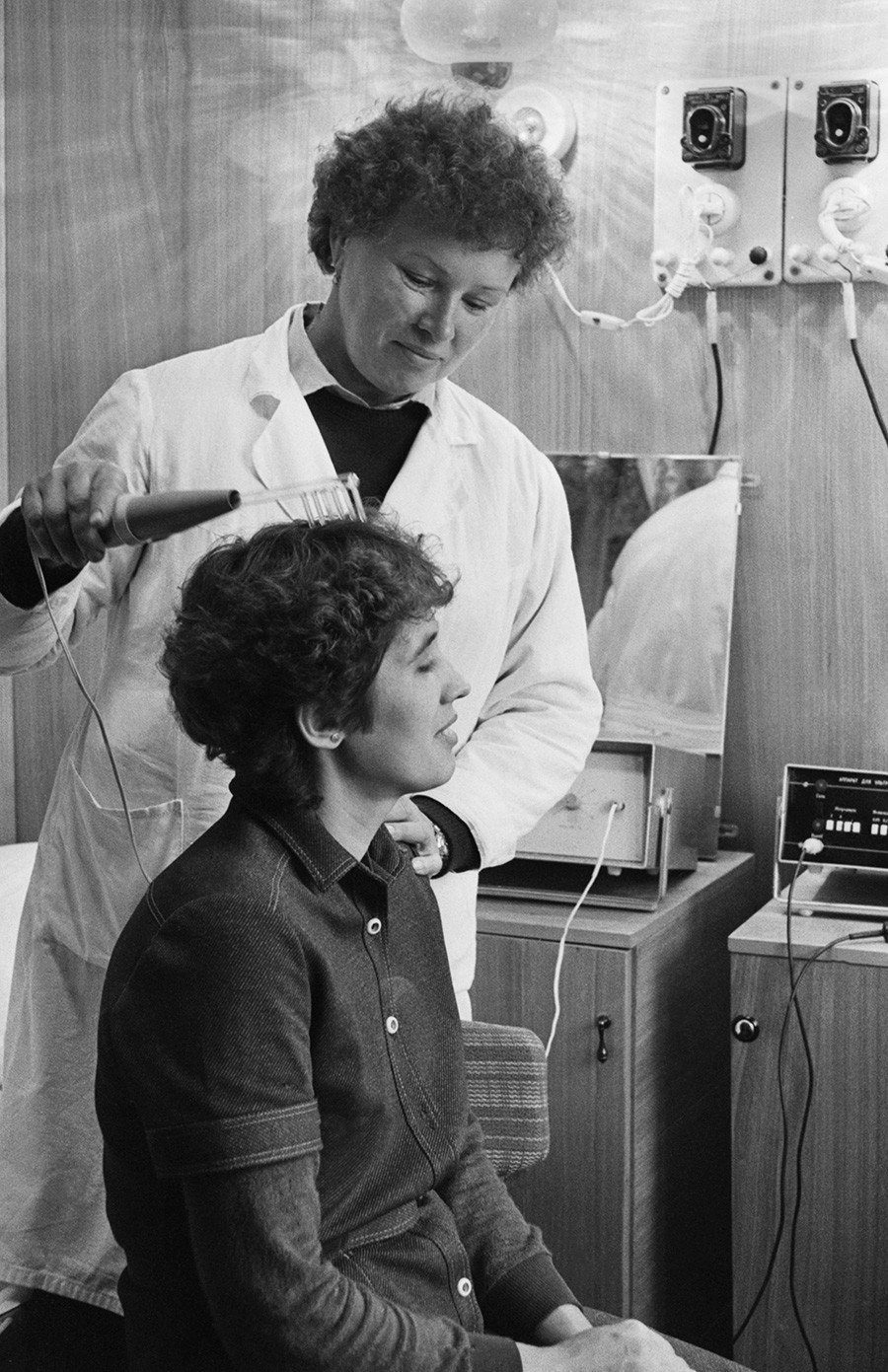
Employee of Bakharevka furniture factory of enterprise Permmebel in the physiotherapy room of the complex of household services, Perm, 1988.
Yevgeny Zagulyaev/TASS
This unusual device called D'Arsonval (named after the French scientist Jacques-Arsène d'Arsonval) was used to cure joint illness and arthrosis in the Soviet years. The treatment was based on a weak impulse current that improved blood circulation. Today, D'Arsonval is often used at home in Russia, but mostly as a device for face skin and hairs: it helps to get rid of acne, scars, dandruff on the head and strengthens hair growth. The patient feels only a slight tingling during the procedure, but there is no discomfort.
And now a photo challenge for you: What do you think this device was used for in the Soviet Union? Write to us in the comments. We don't know the correct answer, so we're hoping you do!
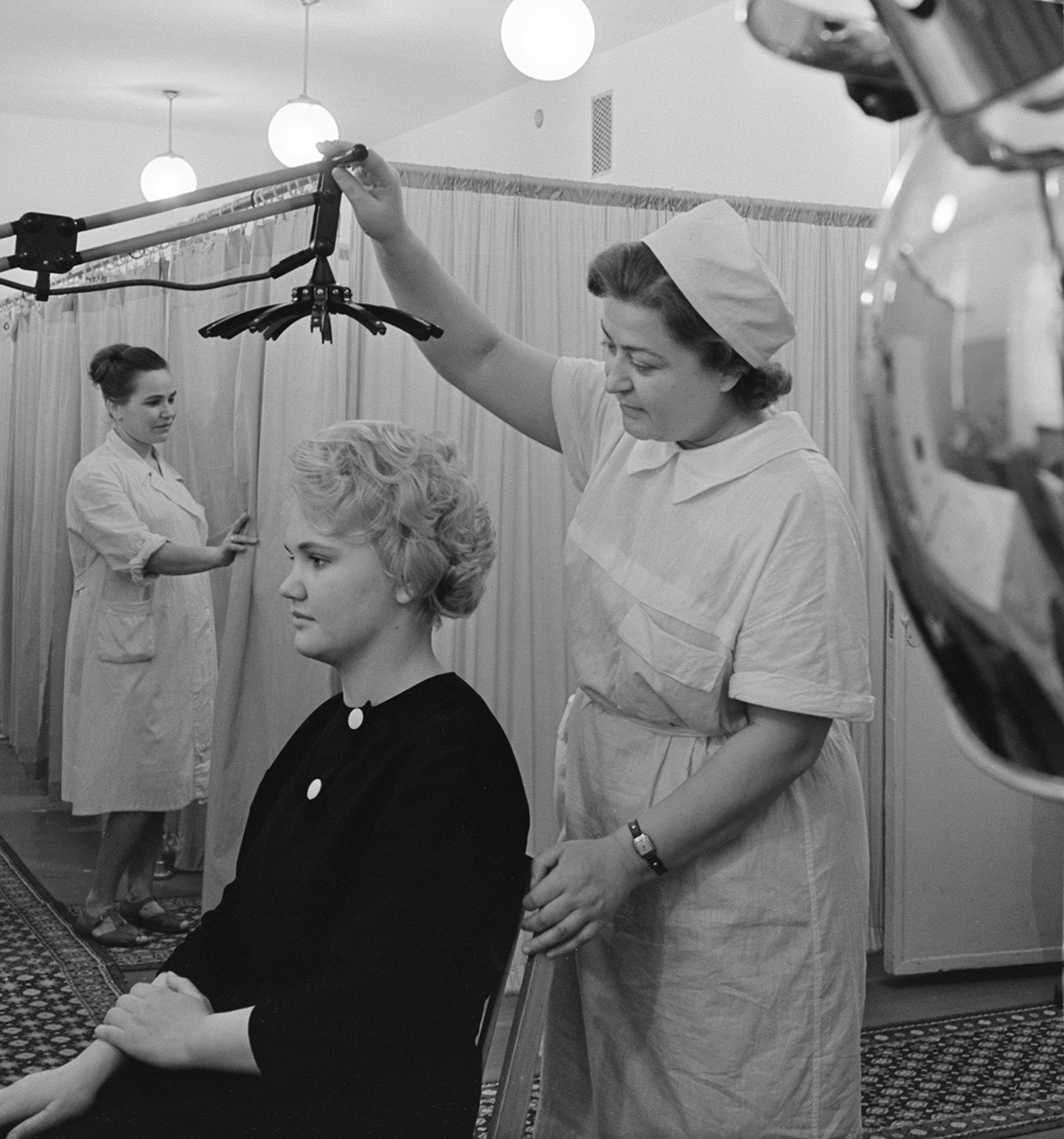
A physiotherapy procedure, 1964.
TASS
Please enable JavaScript to view the comments powered by Disqus.
 Share
Share
 Tweet
Tweet
 Share
Share
 Flip
Flip
 Email
Email
Watch latest videos
Subscribe and Follow
Get a daily dose of Cincinnati Sun news through our daily email, its complimentary and keeps you fully up to date with world and business news as well.
News RELEASES
Publish news of your business, community or sports group, personnel appointments, major event and more by submitting a news release to Cincinnati Sun.
More InformationInternational
SectionFaulty IT system at heart of UK Post Office scandal, says report
LONDON, U.K.: At least 13 people are believed to have taken their own lives as a result of the U.K.'s Post Office scandal, in which...
Travelers can now keep shoes on at TSA checkpoints
WASHINGTON, D.C.: Travelers at U.S. airports will no longer need to remove their shoes during security screenings, Department of Homeland...
Rubio impersonator used AI to reach officials via Signal: cable
WASHINGTON, D.C.: An elaborate impersonation scheme involving artificial intelligence targeted senior U.S. and foreign officials in...
Warsaw responds to migration pressure with new border controls
SLUBICE, Poland: Poland reinstated border controls with Germany and Lithuania on July 7, following Germany's earlier reintroduction...
Deadly July 4 flash floods renew alarm over NWS staffing shortages
WASHINGTON, D.C.: After months of warnings from former federal officials and weather experts, the deadly flash floods that struck the...
Putin fires transport chief, later found dead in suspected suicide
MOSCOW, Russia: Just hours after his sudden dismissal by President Vladimir Putin, Russia's former transport minister, Roman Starovoit,...
Business
SectionEx-UK PM Sunak takes advisory role at Goldman Sachs
NEW YORK CITY, New York: Former British prime minister Rishi Sunak will return to Goldman Sachs in an advisory role, the Wall Street...
Gold ETF inflows hit 5-year high as tariffs drive safe-haven bets
LONDON, U.K.: Physically backed gold exchange-traded funds recorded their most significant semi-annual inflow since the first half...
PwC: Copper shortages may disrupt 32 percent of chip output by 2035
AMSTERDAM, Netherlands: Some 32 percent of global semiconductor production could face climate change-related copper supply disruptions...
U.S. stocks recover after Trump-tariffs-induced slump
NEW YORK, New York - U.S. stocks rebounded Tuesday with all the major indices gaining ground. Markets in the UK, Europe and Canada...
Stocks slide as Trump unveils 25% tariffs on Japan, S. Korea
NEW YORK CITY, New York: Financial markets kicked off the week on a cautious note as President Donald Trump rolled out a fresh round...
BRICS issues rebuke on trade and Iran, avoids direct US criticism
RIO DE JANEIRO, Brazil: At a two-day summit over the weekend, the BRICS bloc of emerging economies issued a joint declaration condemning...

